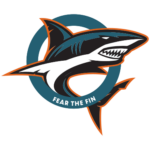It’s become an annual tradition in the hockey analytics community to identify a team whose early season record appears to be a house of cards. From Minnesota in 2012 to Dallas in 2011 to Colorado in 2010, the numbers have been very perceptive in flagging teams that ride high shooting or save percentages (or both) to success before crashing back down to earth. While the narrative describing clubs that get woefully outshot while continuing to pile up wins usually revolves around a brilliant coach’s system that influences shot quality at both ends, allegedly only allowing attempts from the outside while generating all of their shots on odd-man rushes, it’s exceedingly rare that percentages-driven success is sustainable since actual team-to-team differences in shot quality are minimal and tend to be highly exaggerated by short-term results. PDO, a dumb name for the summation of a club’s even-strength shooting percentage and save percentage, tends to regress heavily to the mean across the board. This doesn’t necessarily mean NHL teams can’t influence shooting and save percentage, just that they’re rarely able to do so in the long run. As a result, shot differential is the single best predictor of future winning.
Which brings us to tonight’s opponent, the Anaheim Ducks. Expected to be little more than a bubble team heading into the 2013 season, the Ducks are currently sitting pretty atop the Pacific Division and have fewer standings points than only the Chicago Blackhawks league-wide. They’re also the favorites for the 2013 PDO Cup. Through 27 games, Anaheim has scored on 11.5% of their even-strength shots while their goalies have combined for a 0.932 SV% at evens, percentages that rank first and third in the NHL, respectively. They’ve accomplished this while being frankly dominated territorially; with the score either close or tied, the Ducks earn just 46% of even-strength shot attempts (25th in the league). In addition, Anaheim has won 73.3% of the one-goal games they’ve been in, another percentage that’s a good bet to regress going forward.
Despite their myriad similarities to the previous teams engraved on the PDO Cup, the Ducks have three major things going for them that those teams did not. By far the most significant is that they picked the best season imaginable to ride the percentages. With just 48 regular season games on the 2013 slate, Anaheim punched their ticket to the postseason long ago. There’s about a 1.1% chance the Ducks miss the playoffs and it’s exceedingly likely they’ll open the postseason on home ice. Even if they tail off down the stretch as expected, there simply aren’t enough games left for it to matter considering the massive amount of points Anaheim already has in the bank.
Secondly, their power play is legitimately awesome. We’ve discussed before that a team’s shot rate with the man-advantage is a more stable talent than their power play conversion percentage. The biggest reason the Sharks scored more power play goals per minute from 2008 through 2012 than any other team is because they also generated the most power play shots per minute over that span. One of the worst six-game stretches of 5v4 play during the McLellan era earlier this year has meant the Sharks have tumbled out of their customary top spot on the power play shot metrics rankings. Bruce Boudreau’s Ducks have been more than happy to fill it, generating the most power play shots per minute of any team in the league this season by a fair margin. Granted, they likely won’t keep scoring on 15.4% of those shots, but they appear to have the scariest power play unit in the league nonetheless.
Finally, the Ducks have the pleasure of facing the Sharks three more times this season, starting tonight and continuing with a home-and-home series next week. Regardless of what the numbers say, Anaheim always seems to give San Jose fits and they’ve gone 6-1-1 against the Sharks since the beginning of the 2011-12 campaign. They’ve earned most of those victories too, generating 106 even-strength scoring chances to San Jose’s 101 during those eight games. The Sharks have rarely had an answer for the Ducks’ top line and while Corey Perry is still serving his suspension for a vicious hit to the head of Jason Zucker, they’ll be able to spell him on that top trio with Teemu Selanne, which ain’t bad. To pick up the absolutely pivotal points available in these games, the Sharks need to establish an aggressive forecheck to pressure a Ducks blue line which, outside of Cam Fowler, has had serious issues advancing the puck this season. If they can force neutral zone turnovers, San Jose will have a chance to do what they do best and wear down the Ducks with their possession game. Go Sharks.
 |
@ |
 |
| 12-9-6, 30 points |
20-3-4, 44 points | |
| 8th in Western Conference | 2nd in Western Conference |
7PM PST | Honda Center | Anaheim, California
TV: CSNCA-HD | Radio: 98.5 KFOX, SJSharks.com
Know Your Enemy: Anaheim Calling, Battle Of California
Projected Sharks Lineup
Logan Couture – Joe Thornton – Brent Burns
Patrick Marleau – Joe Pavelski – Martin Havlat
James Sheppard – Scott Gomez – Tommy Wingels
T.J. Galiardi – Michal Handzus – Adam Burish
Matt Irwin – Dan Boyle
Marc-Edouard Vlasic – Jason Demers
Douglas Murray – Brad Stuart
Projected Ducks Lineup
Bobby Ryan – Ryan Getzlaf – Teemu Selanne
Andrew Cogliano – Saku Koivu – Daniel Winnik
Brandon McMillan – David Steckel – Kyle Palmieri
Matt Beleskey – Peter Holland – Emerson Etem
Sheldon Souray – Francois Beauchemin
Bryan Allen – Cam Fowler
Luca Sbisa – Ben Lovejoy

 As many of you know, Fear the Fin is an independent site run by Sharks fans for Sharks fans. Help keep Fear the Fin independent by contributing to our
As many of you know, Fear the Fin is an independent site run by Sharks fans for Sharks fans. Help keep Fear the Fin independent by contributing to our